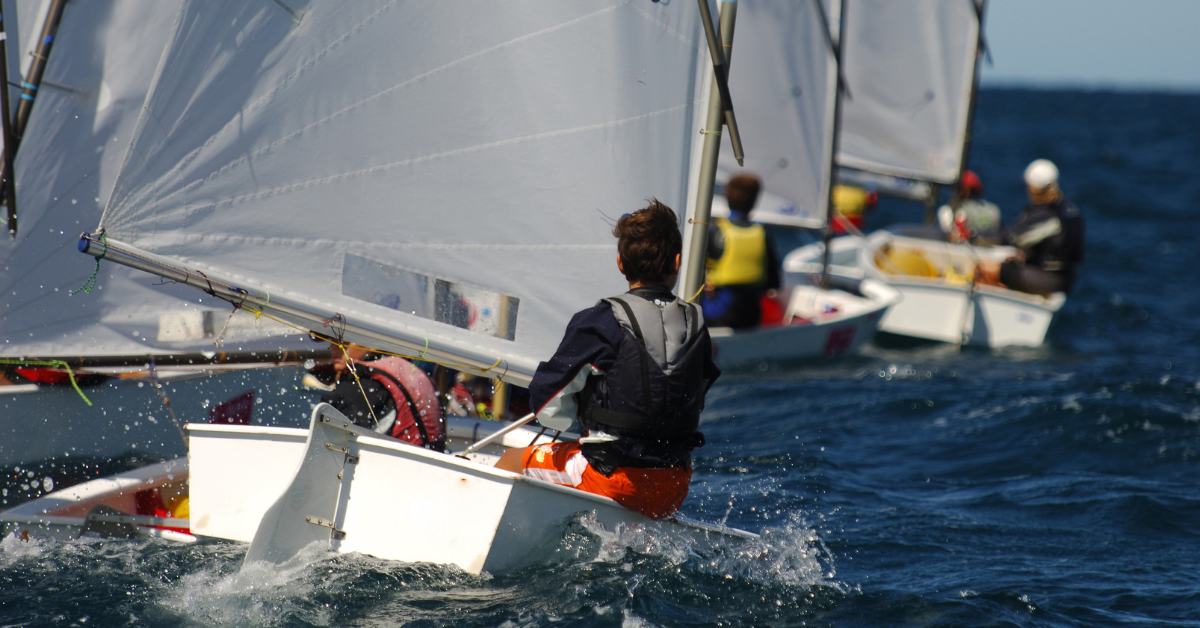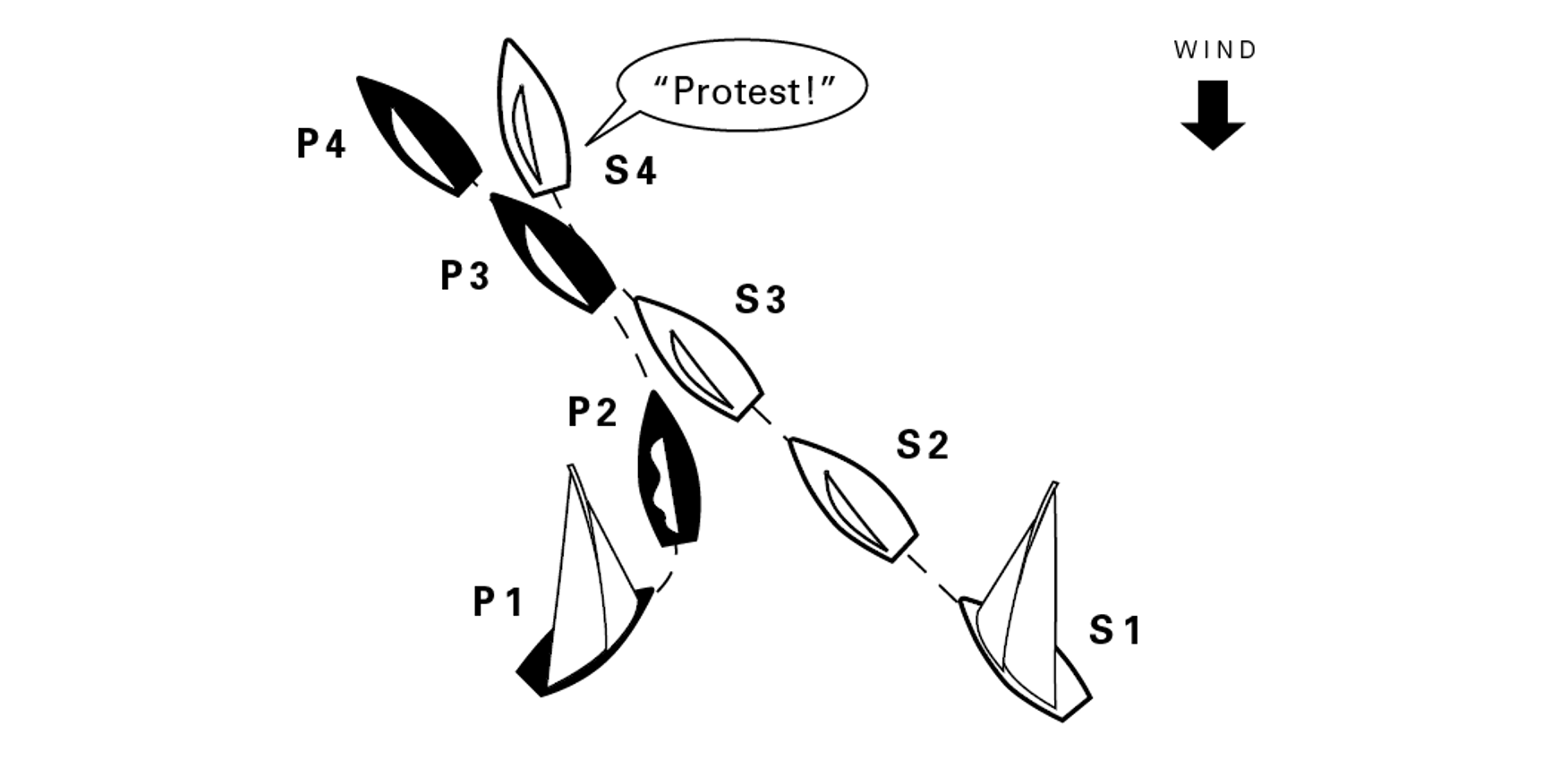
Question:
Boats P (on port tack) and S (on starboard tack) are beating to windward. P tacks into a position just in front of S. When P reaches a close-hauled course, she is a few feet clear ahead of S. S, who has not needed to change course prior to that moment to avoid P, immediately luffs above a close-hauled course, avoids contact and protests. You are on the protest committee; how would you decide this? (answer below image)

ANSWER: S’s protest is dismissed; neither boat breaks a rule. While P is on port tack she is required to keep clear of S by rule 10, On Opposite Tacks. While P is tacking, she is required to keep clear of S from the moment she passes head to wind until she reaches a close-hauled course by rule 13, While Tacking. A boat “keeps clear” if the right-of-way boat can sail her course with no need to take avoiding action (see the definition Keep Clear). S does not need to take any avoiding action before P reaches a close-hauled course.
When P reaches a close-hauled course, rule 13 ceases to apply and P is the right-of-way boat under rule 12, On the Same Tack, Not Overlapped. Because she acquired the right of way by her actions, P is required to give S room to keep clear of her by rule 15, Acquiring Right of Way. S is able to avoid P in a seamanlike way; therefore P complies with rule 15.
This quiz was excerpted from Dave Perry's 100 Best Racing Rules Quizzes available from US Sailing.
How did you do? Tell us in the comments and be sure to challenge your friends! Ready to race on June 18th? Check out some of the regattas that will be participating in Summer Sailstice! Click Here.
Article Type
Refers to
US Sailing
